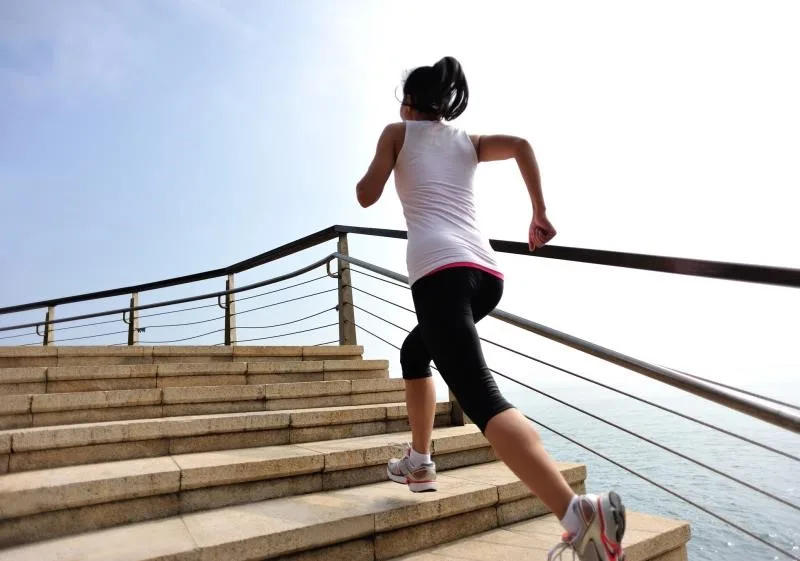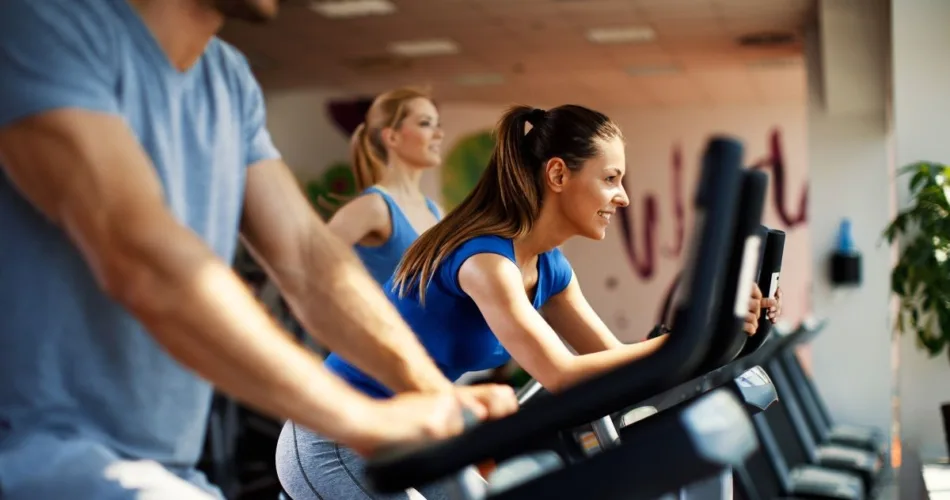
Active Commuting:
Swap the passive commute for an active one by walking, cycling, or even skateboarding to work. Not only does this contribute to physical fitness, but it also reduces your carbon footprint, promoting a healthier environment. Active commuting refers to the mode of transportation where individuals use physical activity, such as walking, cycling, or other forms of exercise, to travel to and from their destinations. Walking or cycling regularly can contribute to increased cardiovascular fitness, improved muscle strength, and weight management. Incorporating physical activity into daily routines promotes a healthier lifestyle and reduces the risk of sedentary-related health issues, such as obesity and heart disease.

Outdoor Adventures:
Take advantage of the great outdoors by engaging in activities like hiking, kayaking, or rock climbing. Nature offers a dynamic and refreshing backdrop, transforming exercise into an adventure that nourishes both body and mind. Engaging in outdoor adventures offers a plethora of benefits, fostering personal growth, physical well-being, and a deep connection with nature. Here are some unique advantages associated with outdoor adventures:
- Physical Fitness: Outdoor adventures provide an excellent opportunity for physical exercise. Hiking, biking, rock climbing and other activities contribute to cardiovascular health, strength, and overall fitness.
- Stress Reduction: Immersing oneself in nature has proven stress-reducing effects. The combination of fresh air, natural surroundings, and physical activity helps alleviate stress, anxiety, and tension.
- Skill Development: Outdoor adventures often require the acquisition of new skills. Whether it’s learning to set up a campsite, navigate through unfamiliar terrain, or master a specific outdoor activity, these experiences contribute to personal growth and resilience.
- Team Building: Many outdoor adventures involve teamwork and collaboration. Whether it’s a group hike, a team-building ropes course, or a camping trip, working together in an outdoor setting fosters camaraderie and strengthens interpersonal relationships.
- Cognitive Benefits: Nature has been linked to improved cognitive function and creativity. Outdoor adventures provide a break from routine, allowing the mind to relax and rejuvenate. Exposure to natural settings has been associated with enhanced problem-solving skills and increased creativity.
- Self-Discovery: Outdoor adventures often involve stepping outside one’s comfort zone, leading to self-discovery and increased self-confidence. Overcoming challenges in nature can translate into a heightened sense of accomplishment and resilience.
- Appreciation for Nature: Spending time outdoors nurtures an appreciation for the environment. Experiencing the beauty of nature firsthand promotes a sense of responsibility towards environmental conservation and sustainability.
- Healthy Lifestyle Habits: Regular participation in outdoor activities tends to promote a healthier lifestyle. People who engage in outdoor adventures are more likely to adopt habits such as regular exercise, healthy eating, and adequate sleep.
- Enhanced Mental Well-being: Nature has a positive impact on mental well-being. Outdoor adventures contribute to improved mood, reduced symptoms of depression, and an overall sense of well-being.
- Connection with Others: Outdoor adventures provide an excellent setting for social interactions. Whether it’s a group hike, a camping trip with friends, or joining a community sports event, these experiences foster a sense of community and social connection.

Dance Your Heart Out:
Turn househo ld chores into a dance party! Play your favorite tunes and let loose while vacuuming, sweeping, or doing the dishes. Dancing not only adds joy to ordinary tasks but also provides an effective cardiovascular workout. Dance is not only a form of artistic expression but also a fantastic way to engage in physical exercise. Incorporating dance moves into your home workout routine adds an element of fun and creativity while providing an effective cardiovascular workout. Here are some dance moves you can try for exercise at home:
The Cha-Cha Slide:
- Start with your feet together and take a step to the right.
- Bring your left foot to meet your right.
- Take another step to the right.
- Add a rhythmic slide and repeat on the left side.
- This move engages your lower body, particularly the hips and thighs.
Jumping Jacks with a Twist:
- Begin with a traditional jumping jack motion, arms and legs spreading out and coming back together.
- Add a twist of your hips to each side as your legs spread out.
- This adds a core element to the classic jumping jack, working your abdominals.
Freestyle Dance:
- Put on your favorite music and let loose with your own dance moves.
- Incorporate jumps, spins, and varied arm movements.
- Freestyle dancing is a great way to elevate your heart rate and engage multiple muscle groups.
Zumba Salsa:
- Start with a basic salsa step: step to the side with your right foot, bringing your left foot to meet it.
- Add hip sways and arm movements.
- Increase the intensity by incorporating quick footwork and twisting motions.

Active Socializing:
Active socializing is the willingness to initiate conversations and engage in group activities. This positive stance helps break the ice, create a positive atmosphere, and encourage others to join in. Whether it’s striking up a conversation with a colleague at work, attending social events, or joining clubs and organizations, actively seeking out opportunities to connect with people is essential. Instead of meeting friends for coffee, go for for activities that involve movement. Join a sports club, go for a group hike, or explore fitness classes together. Active socializing encompasses face-to-face interactions, where individuals actively participate in conversations, events, and gatherings. It involves being present in the moment, actively listening, and responding thoughtfully. Socializing while staying active makes the experience enjoyable and fulfilling.

Technology-Assisted Workouts:
Leverage technology to make exercise engaging and convenient. From virtual reality workouts to fitness apps that gamely physical activity, there are numerous options to bring variety and excitement to your fitness routine. This fusion of fitness and technology not only caters to the demands of modern lifestyles but also opens up new possibilities for individuals to achieve their health and wellness goals. Here’s a guide on incorporating technology into your fitness routine:
Fitness Apps:
- Explore various fitness apps available on your smart phone. Apps like MyFitnessPal, Nike Training Club can provide personalized workout plans, track your exercises, and offer nutritional guidance.
Wearable Devices:
- Invest in a fitness tracker or smart watch. These devices can monitor your heart rate, track steps, and even analyze your sleep patterns. They provide real-time data that can help you adjust your workout routine accordingly.
Online Workouts:
- Follow online workout videos or live streaming classes. Platforms like YouTube or fitness-specific websites offer a wide range of exercise routines. Make sure to credit the creators if you share your workouts or routines online.
Fitness Gamification:
- Explore fitness games that turn workouts into a fun and competitive experience. Games like Ring Fit Adventure for Nintendo Switch or various fitness apps with gamified elements can make exercising more enjoyable.
Stair Climbing:

Active Family Time:


